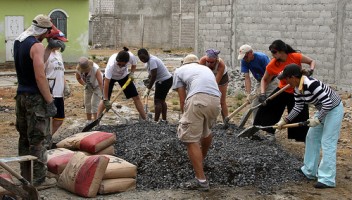 In my last three posts (Outreach, Self-Made Barriers, Engagement Research: Talk to Them) I have been addressing vocabulary and habits of mind that separate us from the public we need to reach. In each case, the issue is seeing ourselves (unconsciously or not) as isolated from–not a part of–the communities we serve. Some of this has to do with a sense of “specialness” that accompanies being an artist or arts worker, and certainly the arts are special. However, if awareness of or focus on that keeps us from connecting with others, it’s seriously counter-productive. Plus, every specialty is special. Plumbers, athletes, lawyers, electricians, accountants, sanitation workers, doctors–all have particular expertise that others do not. If any of them allow that expertise to isolate them, to get in the way of being of use, their success will be limited and those they might have served will be the worse off for it.
In my last three posts (Outreach, Self-Made Barriers, Engagement Research: Talk to Them) I have been addressing vocabulary and habits of mind that separate us from the public we need to reach. In each case, the issue is seeing ourselves (unconsciously or not) as isolated from–not a part of–the communities we serve. Some of this has to do with a sense of “specialness” that accompanies being an artist or arts worker, and certainly the arts are special. However, if awareness of or focus on that keeps us from connecting with others, it’s seriously counter-productive. Plus, every specialty is special. Plumbers, athletes, lawyers, electricians, accountants, sanitation workers, doctors–all have particular expertise that others do not. If any of them allow that expertise to isolate them, to get in the way of being of use, their success will be limited and those they might have served will be the worse off for it.
In arts-community connections, it is essential to bear in mind that the arts community is expert in things related to art (although not in every form, style, and cultural expression–but that’s a story for another day), and/but those we need to serve are expert in their own interests and concerns and, to a greater extent than arts insiders, in the interests and concerns of the communities of which they are a part. Being open to learning from them, to hearing and responding to what they have to say is the only way we can hope to maximize our value to those communities. The key to our future lies in being valuable and valued.
Success in arts-community relationships is in living in partnership, collaborating with those around us to make life better for all. It begins with seeing ourselves as participants in all aspects of community life and as co-equal partners contributing to it. Any unconscious–or conscious!–sense of separation inhibits our effectiveness, limits our viability, and makes us all the poorer.
Engage!
Doug
Photo:![]()
![]()
![]() Some rights reserved by Columbus GV Team
Some rights reserved by Columbus GV Team
